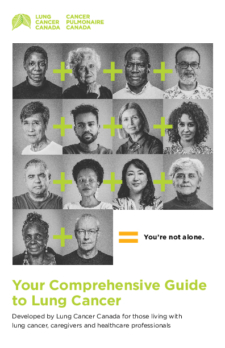Second-hand Smoke
Breathing in smoke can damage your lungs and raise your risk of lung cancer. People who have never smoked, but live with someone who does, have a 30% increased risk of lung cancer.
Radon
Radon is the leading environmental cause of lung cancer, the leading cause of lung cancer in non-smokers and the second leading cause of lung cancer in those who smoke.
Radon is a natural radioactive gas that emerges from the breakdown of uranium in soil and rock. You can’t see, smell or taste it. Outdoors, the open air dilutes radon, so it poses no concern. But inside homes and enclosed spaces, especially those with poor ventilation, it can accumulate to unsafe levels. The more enclosed or poorly ventilated a space is, the higher radon levels can accumulate.
It is important to test for radon in all buildings as no area is radon free. This includes both newly built homes (to be done during the first heating season of the house) as well as older homes. If you are concerned about radon, there are kits available that allow you to test for radon levels in your home.
For more information on radon, visit https://www.canada.ca/en/health-canada/services/health-risks-safety/radiation/radon/testing-your-home.html
Asbestos
Asbestos is a mineral with long, thin and fine fibres. When inhaled, these fibres can become trapped in the lungs and lead to cell damage. People exposed to asbestos in their workplace have an increased risk of developing lung cancer. These work environments include mines, shipyards, or factories that produce cement, insulation, or textiles.
Before 1990, asbestos was mainly used for insulating buildings and homes against cold weather and noise. It was also used for fireproofing. The manufacture, import, sale and use of products containing asbestos is prohibited in Canada. However, asbestos may still be found in older building materials.
Breathing in asbestos fibres can lead to lung cancer, asbestosis (scarring of the lungs that affects breathing), Mesothelioma (a rare cancer of the lining of the chest) and other diseases.
For more information on asbestos and its risks please visit: https://www.canada.ca/en/health-canada/services/air-quality/indoor-air-contaminants/health-risks-asbestos.html
Personal or Family History of Lung Cancer
Having an immediate family member such as a parent, sibling, or child who has had lung cancer also increases a person’s risk. This increased risk could be because of shared genes among family members, similar behaviour (like smoking), or living in environments with the same exposure to carcinogens (like radon).
Previous Radiation Therapy to the Lungs
People who’ve had radiation therapy to the chest for other cancers, such as Hodgkin’s lymphoma or breast cancer, have an increased risk of lung cancer. This risk is even higher for those who smoke and have received chest radiation.
Air Pollution
Air pollution contains harmful chemicals and particles at levels unsafe for health. The specific pollutants associated with a higher risk of lung cancer vary depending on local sources of emissions. Strong evidence suggests that prolonged exposure to air pollution is linked to an increased risk of lung cancer. The more polluted air you breathe, the higher your risk.



